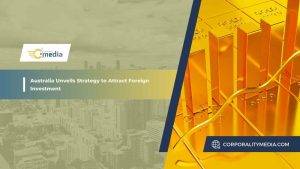The industrial revolution of the 18th century made mass production a possibility. Fast-forward a few centuries and there is no denying that we are a mass consumption society. However, the past several years have seen a shift away from mass consumption to a more customised economy that maintains a greater emphasis on diversity. As a result, consumers have a greater demand for personalised and customizable products.
In today’s age, mass consumption is becoming less homogeneous. Instead, it is the age of the experience economy.
What is the ‘experience economy’?
The experiences economy is about orchestrating memorable moments for your customers.
Let’s think about it as a birthday cake.
As a remnant of the agrarian economy, birthday cakes were made from scratch with only raw ingredients such as flour, sugar and eggs, costing only a few dimes.
But during the product-based economy, those raw ingredients were replaced with premixed materials like Betty Crocker cake mix, that were available straight off the supermarket shelf for only a few dollars.
Then came the service economy, where busy parents purchased premade cakes from bakeries and supermarkets, which, at upwards of $20 a cake, cost tenfold the amount of a premixed package.
Currently, parents will neither make the birthday cake or arrange the party (I can’t say that I blame them), instead preferring to outsource the entire occasion to a specialised company that offers memorable events for children. This is the experience economy.
Although the example of birthday cakes may seem a little trivial, it does show just how much people are willing to pay for experiences. This tendency is especially evident amongst millennials, with research by the Harris Group finding that 72% of millennials would prefer to open their wallets based on experiences rather than on material items.
The types of experiences
As a business looking to capitalise on the experience economy, there are two main types of experiences that consumers can have with a company or brand; customer participation and connection.
Customer participation is about providing your customers with the opportunity to participate in experience either actively or passively. Active participation in experience is all about including a customer in the planning and creation of an experience, whilst your business executes it. This could include collaborating with the customer to plan the theme or location of the party. Alternatively, many customers simply prefer to show up to a well planned and executed experience that they don’t need to lift a finger to enjoy. As a result, you should be aware that different customers will require different levels of involvement in the experience economy. Thus, your business must be flexible enough to cater to these different customer personas.
Customers also require connections. Regardless of whether your customer is absorbed or immersed into the experience, it is vital in the experience economy that customers have a human connection to the business and brand that is creating their experience. In turn, businesses need to make sure that they prioritise making a real connection with customers as opposed to a superficial one.
In the experience economy, the general rule of thumb is simple; give customers what they want.
We need to be able to identify and fulfil the needs that customers don’t ask for and, in many cases, don’t even know that they have. We need to analyse their data and generate products to fit consumers because there is no one-size-fits-all in the experience economy.












More Stories
FCC Imposes $200 Million Fine on Major US Mobile Carriers for Unauthorized Sale of Customer Location Data
Louis Dreyfus Company Emerges Victorious in Namoi Cotton Takeover Bid
Rent.com.au Reports Record Revenue as RentPay Platform Hits $250 Million Milestone